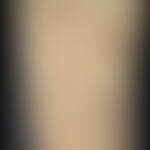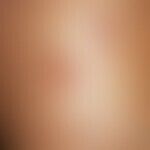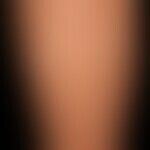Synonym(s)
HistoryThis section has been translated automatically.
Hebra 1874
DefinitionThis section has been translated automatically.
Eminently chronic, polyetiological, endogenously triggered, often accompanied by intolerable itching 0or also painful itching, papular, inflammatory disease of the skin with a typical, disseminated, symmetrical distribution pattern.
Chronic prurigo is associated with a characteristic circumscribed response (spooning, gouging, squeezing) to an itch perceived as "punctate" (also prickly or painful "pruritus"), as well as with the characteristic papules, plaques or nodules induced by the constantly repeated scratching process, which are centrally ulcerated and crusted. In general, this disease is associated with a significant impairment of the quality of life.
You might also be interested in
EtiopathogenesisThis section has been translated automatically.
Cause ultimately unknown.
Numerous triggering factors are being discussed:
- Hormonal disorders, gastrointestinal disorders, liver dysfunction, gynecological disorders, focal infections, neurological, psychiatric-psychosomatic disorders.
- Gluten sensitivity
- As the disease is refractory to antihistamines, non-histaminergic pathomechnamisms are discussed.
- Furthermore, an allergic diathesis and connections with atopic dermatitis are also being considered.
Furthermore, nerve root irritations due to degenerative changes in the spinal vertebrae that come into question with regard to the distribution pattern must be clarified. Morphological studies have shown dermal hyperplasia caused by the release of neuropeptides such as nerve growth factor, substance P and calcitonin-gene related peptides.
See also Prurigo diabetica, Prurigo gestationis, Prurigo hepatica, Prurigo lymphatica, Prurigo chronica multiformis. The extent to which these clinical pictures are true variants of prurigo simplex subacuta, or whether itching is the only common background, remains an open question.
The following names were also used in the past:
- Prurigo uraemica
- Prurigo lymphatica
- Prurigo lymphogranulomatotica(Hodgkin's lymphoma).
ManifestationThis section has been translated automatically.
Occurring mainly in women between 20 and 30 years of age or after menopause; in men usually after 60 years of age. No seasonal or regional preference.
LocalizationThis section has been translated automatically.
Usually the upper arm extensor sides, upper back, buttocks, outer side of the thighs, chest region are affected, more rarely the face. Rarely generalized. Usually free are those parts of the skin that are difficult or impossible to reach with the hands (e.g. skin between the shoulder blades). The mucous membranes, palms of the hands and soles of the feet are always free.
ClinicThis section has been translated automatically.
Mostly colorful clinical picture with sharply defined, solitary, never confluent efflorescences of varying acuity, from freshly scratched to scarred healed.
- Primary efflorescences are usually not detectable! It is also possible that no primary efflorescences exist. The following have been described: urticarial, eminently itchy, 0.2-0.5 cm large, red, urticarial papules, which do not fall below a certain distance from each other. The examining physician does not find such "preliminary efflorescences" and has to be content with the description of a stinging, agonizing, punctiform itching in normal appearing skin.
- Residual findings (typical clinical findings): 0.3-0.5 cm large, centrally scratched (spooned out) and covered with a crust or fresh granulation tissue, flat raised, red or reddish-brown, sharply defined papules/erosions/ulcers. Typically, there are no linear scratch marks on the surrounding skin (as in atopic dermatitis, for example). The erosions also do not spread to the perilesional skin areas.
- Scars: Depending on the duration of the disease symptoms, scars of varying age, white or still reddened, are also found, which reflect the exact size of the pre-existing prurigo papules.
- Itching: Typical is a punctual, unpleasantly stinging itching, which is answered with an equally targeted and typical, deep scratching reaction (spooning); afterwards the itching stops abruptly.
- Scratching automatisms: It is not uncommon for scratching automatisms to develop that are difficult to interrupt.
Remember! It is not the "disturbing efflorescences" but the localized, punctiform, agonizing itching that leads to the doctor!
HistologyThis section has been translated automatically.
Pronounced irregular hyperplasia of the epidermis with elongation of the rectal ridges. Flat central ulcerations with fresh granulation tissue and raised epidermal margins are frequently seen. In the papillary epidermis, there is a mixed (non-specific) inflammatory infiltrate possibly with neutrophils and also eosinophils with diffuse superficial fibrosis with fibroblast proliferation. Occasionally small neuromas are found (Pautrier's neuroma).
Differential diagnosisThis section has been translated automatically.
- Prurigo form of atopic eczema: Clear evidence of existing atopy (IgE, RAST). Other clinical signs of atopic eczema.
- Dermatitis herpetiformis: Symmetrical, disseminated, very itchy to burning, 0.1-0.2 cm large, urticarial erythema, rarely vesicles. Laboratory: In some cases blood eosinophilia. Antibody detection: Anti-Gliadin-AK, Anti-Endomysium-AK, AK against tissue transglutaminase, AK against epidermal transglutaminase (most sensitive serological test for diagnosis). Immunohistology is conclusive.
- Prurigo nodularis: Eminently chronic disease characterized by numerous, large, severely itching, large (0.6-2.0 cm in size) reddish-brown or brown nodules. Nodules are significantly larger than in Purigo simplex subacuta! The common feature is the highly chronic course and quality of the itching.
- Polymorphic light dermatosis: Mostly urticarial non-scratched papules. Infestation of the areas exposed to light.
- Purigoform of bullous pemphigoid: Serological detection of pemphigoid-AK. Immunohistology with detection of basement membrane AK.
- Lymphomatoid papulose: Histology (immunohistology CD30 positive lymphocytes) is diagnostic. Disseminated occurrence rather rare.
- Reactive perforating collagenosis: typical efflorescences with central cap-like crusts, usually no itching
General therapyThis section has been translated automatically.
In case of pronounced scratching automatisms, cooperation with a psychotherapist or a psychiatrist. Differentiation from the dermatocoen delusion (question of skin parasites) is necessary.
A subtle examination with clarification of an underlying internal disease is important.
Notice! Always exclude internal diseases with Prurigo simplex subacuta!
External therapyThis section has been translated automatically.
UVB; balneo-phototherapy, saline baths or oil baths with added polidocanol, e.g. Balneum Hermal plus; PUVA therapy systemically or balneophotochemotherapy ( PUVA bath therapy) are indicated.
Care measures with hydrophilic creams or lotions, possibly with a 1-3% polidocanol additive (e.g. Optiderm lotion/cream), or also meenthol additives, are helpful accompanying measures; for minor itching, the application of a 1% polidocanol shaking mixture R200 is sufficient.
For persistent itching, temporary glucocorticoid-containing film dressings (1-2 h/day; use a household clear film fixed with an adhesive strip) can be applied, e.g., with 0.1% triamcinolone acetonide cream (Triamgalen, Volon A) or 0.05-0.1% betamethasone (Betagalen, Betnesol, R030, R029 ).
Persistent therapy-resistant prurigo papules should be consistently and repeatedly (intervals of 3-4 weeks) injected with a glucocorticoid-containing crystal suspension (10 mg triamcinolone acetonide, e.g. Volon A, diluted 1:1-1:3 with 1% scandicaine, applied intrafocally with a thin needle, not sublesionally).
Capsaicin: local therapy with 0.025/0.05/0.1% "hydrophilic capsaicin cream" (apply thinly 4-6 times daily).
Internal therapyThis section has been translated automatically.
Short-term glucocorticoids such as prednisone (e.g. Decortin) initial 40-60 mg, gradual reduction within 14 days. This therapeutic approach is generally only morbostatic and not permanently successful.
Alternatively: Oral, low or non-sedating antihistamines such as desloratadine (e.g. Aerius) 1-2 tbl/day or levocetirizine (e.g. Xusal) 1-2 tbl/day. In cases of considerable itching, also sedative antihistamines such as dimetinden (e.g. Fenistil) 3 times/day 1 mg or anxiolytic antihistamines such as Hydroxyzin 25-75 mg/day (e.g. Atarax).
Alternative: Gabapentin 900mg/day
Alternative: Pregabalin 72-225mg/day.
Alternative: Successes have been described with the psychopharmacological drug olanzapine (initial 5 mg; as long-term therapy 10 mg/day p.o.).
Experimental: Neurokinin-1 receptor antagonists(aprepitant): the results of a randomized study 80mg aprepitant/day over 4 weeks) are still pending.
Experimental: Anti-IL-31 receptor A antibody (nemolizumab): the results remain to be seen.
Not effective: Chloroquine: The use of chloroquine (e.g. Resochin) has not proved effective
Remember! Due to the chronicity of the clinical picture, intensive and close patient guidance is necessary!
Progression/forecastThis section has been translated automatically.
Chronic, often years-long course.
NaturopathyThis section has been translated automatically.
Good results are achieved with dermatological climatic therapy (especially stimulating climate at the North Sea and in the high mountains).
Cooling rubs with vinegar water or a 2% menthol spirit.
Supplementary: Menthol: local therapy with a 1-5% menthol cream.
Recent studies show a response of itching to CBD externally and internally, see under cannabinoids.
Note(s)This section has been translated automatically.
The subdivision into different Subtypes of the Prurigo simplex subacuta do not follow a clearly recognizable etiopathogenetic principle. Therefore, it rather leads to confusion (Ständer S 2018) and is reproduced here only for historical reasons.
The "Acne urticata" described by M. Kaposi in 1893 is a variant of the prurigo simplex subacuta, which is restricted exclusively to the face and is mainly used in young (mentally unstable) women.
LiteratureThis section has been translated automatically.
- Akar HH et al (2014) Prurigo simplex subacuta or prurigo simplex acuta? Eur Ann Allergy Clin Immunol 46:152-153
- Balakirski G et al (2014) Bullous pemphigoid: a new look at a well-known disease. dermatologist 65:1013-1016
- Bergner T et al (1990) Prurigo simplex subacuta. Act Dermatol 16: 221-225
- Boyd K et al (2014) The role of capsaicin in dermatology.
Prog Drug Res. 2014;68:293-306. - Dauden E, Garcia-Diez A (2003) Severe resistant subacute prurigo successfully controlled by long-term cyclosporin. J Dermatolog Treat 14: 48-50
- Friday M, by Kobyletzki G, Pieck C, Altmeyer P (1999) Balneologic photochemotherapy of prurigo simplex subacuta. dermatologist 50: 344-349
- Huyn J et al (2006) Olanzapine therapy for subacute prurigo. Clin Exp Dermatol 31: 1-2
- Pereira MP et al (2018) Chronic prurigo. Dermatologist 69:321-328
- Schmidt E et al (2002) Subacute prurigo variant of bullous pemphigoid: autoantibodies show the same specificity compared with classic bullous pemphigoid. J Am Acad Dermatol 47: 133-136
- Stand S (2018) Pruritus, Prurigo. In: Braun-Falco`s Dermatology, Venerology Allergology G. Plewig et al (Hrsg) Springer Verlag S 591-592
Incoming links (27)
Acne urticata; Betamethasone valerate cream hydrophilic 0.025/0.05 or 0.1% (nrf 11.37.); Betamethasone valerate emulsion hydrophilic 0,025/0,05 or 0,1 % (nrf 11.47.); Chronic prurigo; Collagenosis reactive perforating; Diabetic prurigo; Ekthyma; Lichen urticatus; Lichen vidal urticatus; Papulonecrotic tuberculid; ... Show allOutgoing links (46)
Antihistamines, systemic; Aprepitant; Atopic dermatitis (overview); Balneo-phototherapy; Betamethasone; Betamethasone valerate cream hydrophilic 0.025/0.05 or 0.1% (nrf 11.37.); Betamethasone valerate emulsion hydrophilic 0,025/0,05 or 0,1 % (nrf 11.47.); Bullous Pemphigoid ; Cannabinoids; Chloroquine; ... Show allDisclaimer
Please ask your physician for a reliable diagnosis. This website is only meant as a reference.




























